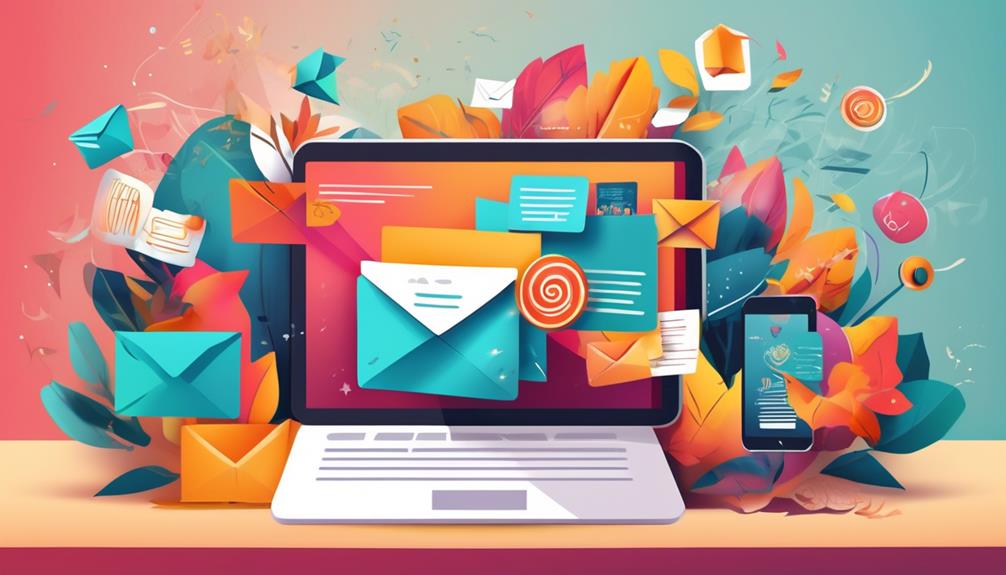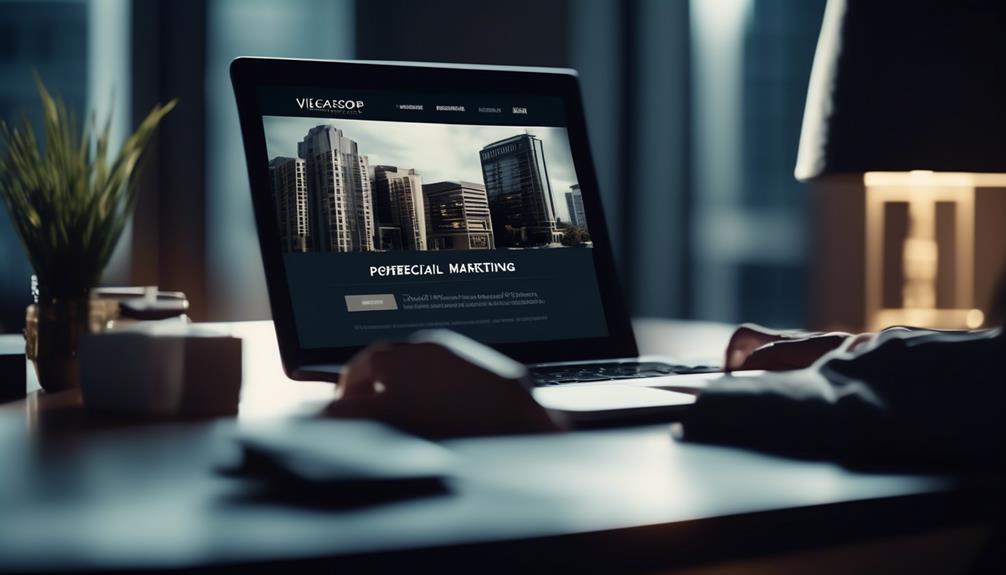You may have noticed that traditional email marketing strategies are becoming less effective in engaging your audience. However, implementing innovative methods to customize your email content can greatly impact the growth of your business.
By incorporating unique and tailored approaches, you can effectively capture your audience's attention and drive better results. Through the use of personalized product recommendations, exclusive VIP offers, and personalized event invitations, you can create a more meaningful and impactful connection with your customers.
These are just a few examples of how personalized email content can make a difference in your marketing efforts, and there are even more strategies to explore.
Key Takeaways
- Personalized email subject lines and dynamic content can significantly increase open and click-through rates.
- Utilizing behavioral segmentation allows for personalized content based on specific actions, which enhances engagement and effectiveness.
- Tailoring email content based on customer actions, such as abandoned carts or past purchases, can increase conversion rates.
- Personalized anniversary and milestone emails, personalized onboarding, loyalty program customization, re-engagement email strategies, and personalized interactive content are effective ways to engage and retain customers.
Personalized Email Subject Lines
When crafting personalized email subject lines, using the recipient's name can significantly boost open rates and engagement, increasing the likelihood that your message will be noticed and acted upon. Personalized subject lines provide a sense of individual attention and relevance, making the recipient more inclined to open the email.
In fact, studies show that using the recipient's name in the subject line can increase open rates by an impressive 26%. This simple yet effective personalization technique can make a substantial difference in the success of your email marketing campaigns.
Additionally, integrating dynamic content and personalized recommendations into your email content further enhances relevance and effectiveness. Tailoring call-to-action buttons and sender names also plays a crucial role in increasing engagement and trust.
Dynamic Content Personalization
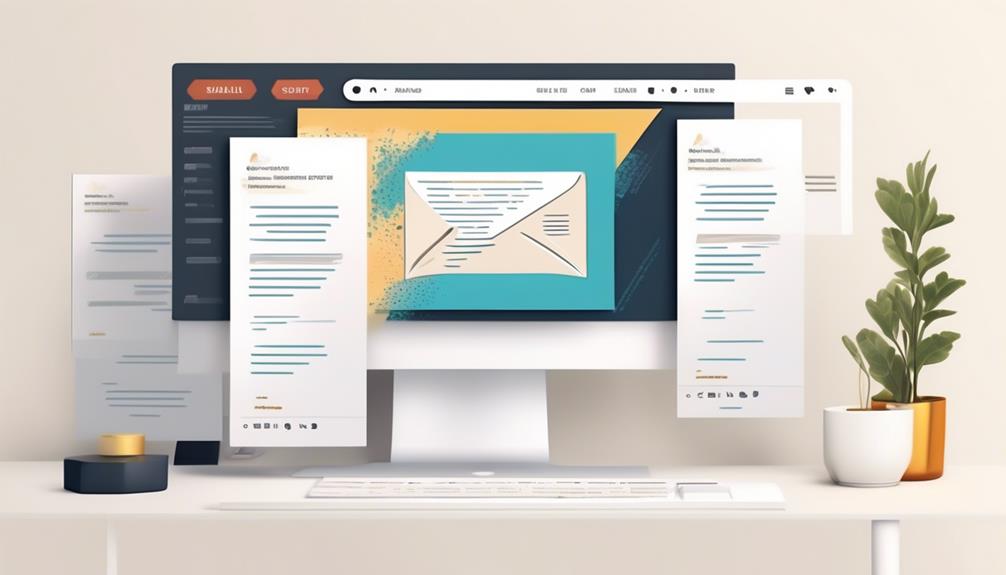
Boosting your email engagement further involves implementing dynamic content personalization, which tailors your emails based on individual preferences and behaviors. By leveraging customer data, you can send personalized product recommendations and targeted offers, thereby enhancing customer engagement and loyalty. Implementing advanced personalization techniques such as triggered emails and dynamic content allows you to increase open and click-through rates by delivering targeted and relevant communication with subscribers.
| Personalized Email Examples | Personalized Recommendations |
|---|---|
| Customized product offers based on past purchases | Tailored product recommendations based on browsing history |
| Dynamic content showcasing items left in the cart | Personalized promotions based on demographic data |
| Personalized images reflecting customer preferences | Targeted offers based on customer behavior |
Using dynamic content personalization in your email marketing personalization strategy allows you to create a more personalized and tailored experience for your subscribers. By employing advanced tactics and personalization techniques, such as using dynamic content and Personalization Tags, you can ensure that your emails resonate with each recipient, leading to improved engagement and ultimately, better results.
Individualized Product Recommendations
To enhance your email marketing strategy, consider utilizing customer data to provide individually tailored product recommendations based on past purchases and browsing history. By doing so, you can send relevant and highly personalized emails that encourage customers to make repeat purchases.
Here are some strategies for implementing individualized product recommendations:
- Utilize marketing automation: Use marketing automation tools to segment your list based on previous purchases and browsing behavior. This will allow you to send targeted product recommendations to each specific person, increasing the likelihood of conversion.
- Leverage data for personalization: Gather and analyze customer data from various sources to create highly personalized product recommendations. This could include previous purchases, wishlist items, and even items left in the shopping cart.
- Encourage repeat purchases: Tailor your email content to showcase products related to a customer's previous purchases. For example, if a customer bought a camera, you can send them recommendations for lenses, tripods, or camera bags to complement their purchase and encourage them to return to your store.
Behavioral Segmentation Techniques
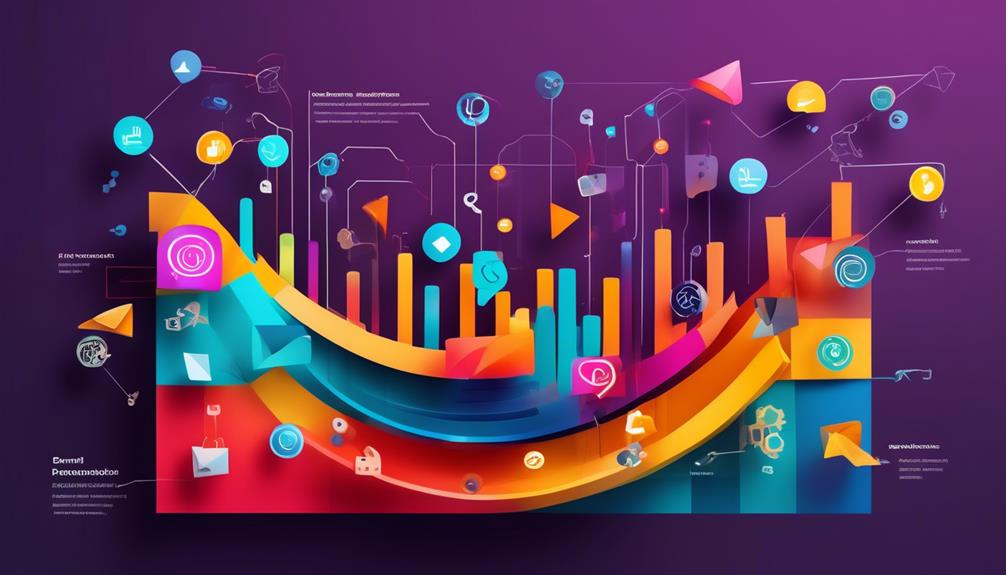
Hey there!
When it comes to reaching your customers with personalized content, behavioral segmentation techniques are key. By identifying specific behaviors and preferences, you can tailor your email content to match their interests.
This means you can offer personalized product recommendations and create unique customer segments based on their actions, ultimately leading to more engaging and effective email marketing campaigns.
Targeted Content Based on Behavior
Utilizing behavioral segmentation techniques in your email marketing strategy allows you to personalize content based on individual customer actions and interactions, enhancing engagement and driving conversions. By using personalized recommendations based on past purchases, you can create a personalized experience for your email subscribers, increasing the relevance and effectiveness of your campaigns.
Understanding customer journeys through behavioral segmentation enables you to tailor content that aligns with specific interests and behaviors, leading to a more engaging user experience. Analyzing customer data to create targeted content based on behavior empowers you to deliver emails that resonate with recipients, ultimately strengthening your relationship with customers and driving higher conversion rates.
Incorporating behavioral segmentation into your personalized email campaigns can significantly improve the impact and effectiveness of your marketing efforts.
Personalized Recommendations for Users
When tailoring personalized recommendations for users, employing behavioral segmentation techniques allows you to understand and target specific user behaviors and preferences, creating a more engaging and effective email marketing strategy. By leveraging customer data and employing behavioral segmentation, you can create dynamic segments for personalized strategies based on user engagement. Integrating recent purchases or browsing history enables the delivery of relevant product recommendations, enhancing the customer experience. Utilizing automation to send personalized recommendations and special offers to targeted users further enhances the effectiveness of personalized emails. This approach ensures that your audience receives personalized content and special offers that are tailored to their specific interests and preferences, ultimately leading to higher engagement and conversion rates.
| Personalized Email Content Ideas | Personalized Recommendations | Creating Personalized Emails |
|---|---|---|
| Tailored messages for individuals | Targeting specific behaviors | Dynamic segments |
Tailoring Email Based on Actions
To effectively tailor your email content based on user actions, it's crucial to understand and leverage customer behavior and interactions. Implementing behavioral segmentation techniques allows you to send targeted and relevant messages to your subscribers.
Here are three key ways to tailor email based on actions:
- Cart Abandonment: Send personalized emails to encourage them to make a purchase by reminding them of the items left in their cart.
- Order Confirmation Email: Utilize email personalization to send order confirmation emails with the subscribers' first name and relevant product recommendations based on their purchase.
- Using Demographic and Customer Preferences: Analyze customer engagement data and use demographic information to personalize product recommendations and offers based on customers' preferences.
Anniversary and Milestone Emails

Celebrate your customers' loyalty and journey with personalized anniversary and milestone emails that acknowledge their support and offer special rewards. By using customer data, you can create personalized anniversary messages that recognize and appreciate their loyalty. Sending personalized anniversary greetings and thank-you emails can help in building strong customer relationships. Acknowledging customer milestones through email marketing shows that you value their continued support and patronage. It's an opportunity to not only recognize their journey with your business but also to offer special promotions and deals as a token of appreciation. Take a look at the table below for some ideas on how to create personalized anniversary and milestone emails:
| Milestone | Email Content |
|---|---|
| 1 year | Thank you for being part of our journey! Here's a special offer just for you. |
| 5 years | Celebrating 5 years together! Enjoy a personalized discount. |
| 10 years | We're grateful for your 10 years of support. Here's a special promotion. |
| 20 years | Thank you for two decades of loyalty. Here's an exclusive deal for you. |
These personalized emails not only delight your customers but also encourage continued engagement with your brand.
Personalized Customer Onboarding

When it comes to welcoming new customers, personalized onboarding is key to making a great first impression.
Tailored welcome emails and customized onboarding workflows can help make the transition into using your product or service smoother and more enjoyable.
Tailored Welcome Emails
Crafting tailored welcome emails is an essential step in providing a personalized customer onboarding experience that resonates with new customers. When personalizing your email campaigns, consider first name personalization to create unique and highly relevant welcome emails.
Craft personalized messages that use customer behavior and preferences, utilizing custom fields to send personalized content. By incorporating personalized product recommendations, exclusive offers, or tailored content based on the customer's interests, you can ensure that your welcome emails are highly relevant and engaging.
This approach to email marketing campaigns can significantly impact customer engagement, loyalty, and the overall customer experience. Embracing tailored welcome emails in your customer onboarding process demonstrates your commitment to creating a personalized and memorable experience for new customers.
Customized Onboarding Workflows
To enhance the personalized customer onboarding experience, businesses can develop customized onboarding workflows tailored to individual preferences and behaviors. By using customer data to create relevant onboarding sequences, you can make new customers feel valued and understood from the start.
Addressing their specific needs and interests, such as offering free shipping for first-time buyers or targeting specific products based on their browsing history, increases the likelihood of a positive onboarding experience. Implementing email personalization at different stages of the onboarding process further enhances the tailored approach.
By analyzing and optimizing these workflows, businesses can continuously improve the onboarding experience, making it more engaging and valuable for each new customer.
Customized onboarding workflows are essential for creating a strong foundation for long-lasting customer relationships.
Loyalty Program Customization
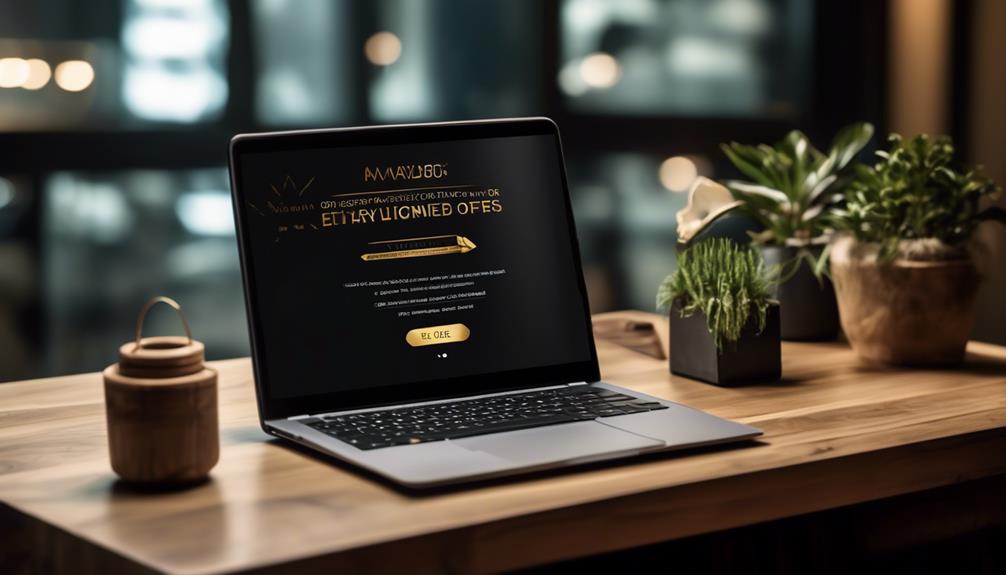
You can enhance customer loyalty by tailoring rewards in your program based on individual preferences and purchase history. Personalizing your loyalty program can make your customers feel valued and appreciated, increasing their commitment to your brand.
Here's how you can leverage email personalization to enhance your loyalty program:
- Increase Open Rates: By sending personalized emails to your loyalty program members, you can capture their attention and encourage them to engage with your brand. Tailoring the content of your emails to their specific interests and purchase history makes the emails more relevant and appealing, increasing the likelihood of them being opened and read.
- Drive Repeat Purchases: When you personalize the offers and rewards in your loyalty program based on individual preferences, you can entice customers to make repeat purchases. By making emails about your loyalty program more relevant to their needs and preferences, you can drive engagement and increase the likelihood of them participating in the program.
- Enhance Customer Satisfaction: Customizing the loyalty program experiences based on customer feedback and interests can lead to higher satisfaction levels. By offering personalized and tailored incentives and rewards, you can ensure that your customers feel understood and appreciated, which can strengthen their loyalty to your brand.
Implementing loyalty program customization through personalized email communication can significantly impact customer retention and engagement.
Re-engagement Email Strategies
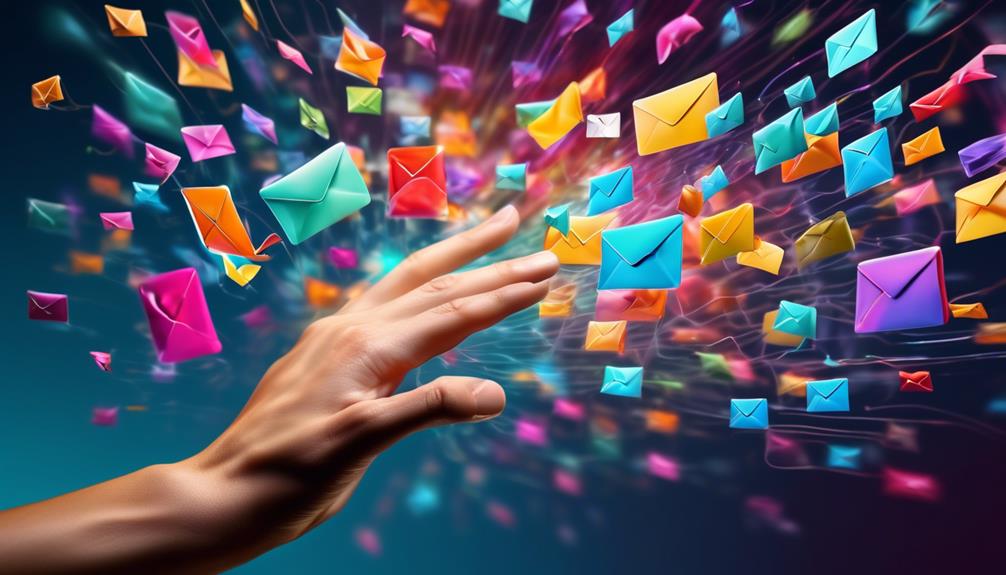
Enhancing customer loyalty through personalized email communication is crucial.
Now we'll explore effective re-engagement email strategies to retain and rekindle customer interest.
When sending an email for re-engagement, make sure to use data to personalize the content.
Crafting personalized subject lines and using dynamic content and product recommendations based on past interactions can make customers feel more connected to your brand.
Implementing triggered emails is another powerful strategy to bring back inactive contacts.
By incorporating personalized sender names and offers, you can make the email experience more engaging and relevant.
Leveraging subscriber tags for further segmentation and dynamic content can also help make a repeat connection with your audience.
These personalized email strategies can significantly improve customer retention and re-engagement, ultimately leading to increased customer lifetime value and business growth.
Personalized Interactive Content
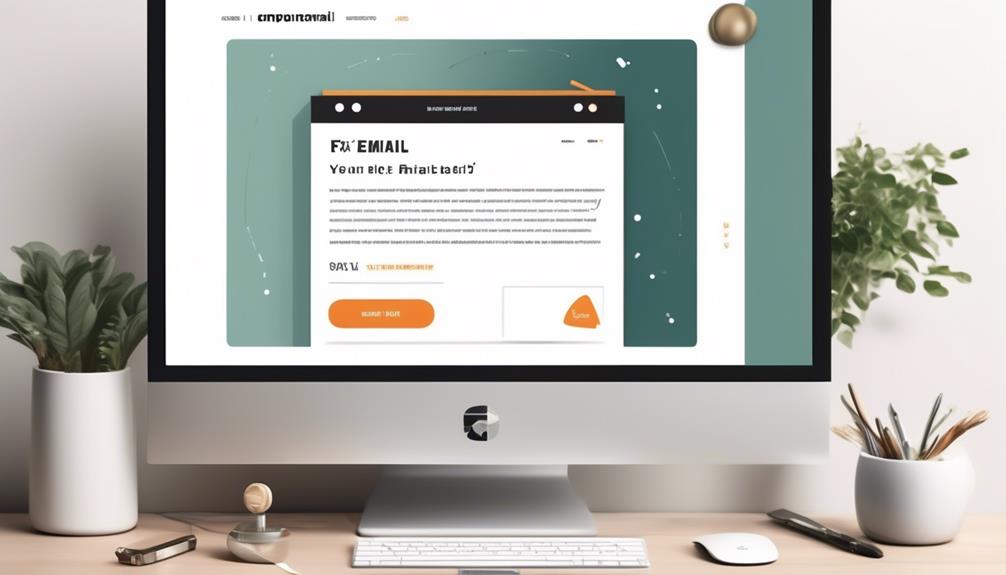
Leveraging personalized interactive content allows businesses to engage with individual preferences and behaviors, creating a more tailored and engaging experience for their audience. When it comes to email personalization, using personalized interactive content can have a significant impact on your email marketing efforts.
By implementing personalized surveys and interactive elements, you can gather specific data that enables you to tailor content based on individual customer profiles. This not only helps users discover new and relevant products or services, but also creates a more engaging experience for them.
Start personalizing your emails by incorporating the recipients' names and using personalized images in your email content. This level of personalization can significantly enhance user engagement and create a more meaningful connection with your audience.
Additionally, sending personalized emails with dynamic content based on individual customer profiles can help solve a problem or provide the latest deals tailored to their preferences. By using personalized interactive content, you can create unique and targeted communication that resonates with each recipient, ultimately driving better results for your business.
Frequently Asked Questions
What Can Businesses Do to Personalize Their Emails to Customers?
To personalize your emails to customers, utilize customer data like age, location, and shopping habits. Craft personalized subject lines and email content to make emails more relevant and engaging. Implement dynamic content based on customer preferences or past purchases for real-time information.
Segment email lists based on common attributes to send targeted emails. Test and analyze the effectiveness of personalization strategies to optimize results.
This approach enhances customer engagement and drives better results.
How Do I Personalize My B2B Email?
To personalize your B2B email, tailor the content to address the specific needs of the recipient. Use their name, company, and industry to create a connection.
Craft compelling subject lines that grab attention, and include relevant insights or case studies to demonstrate your understanding of their business.
Implementing these personalized touches will help your emails stand out and resonate with your B2B audience, fostering stronger relationships and driving better engagement.
How Do I Personalize My Email Blast?
To personalize your email blast, start by segmenting your audience based on demographics, behavior, or preferences. Craft tailored content that resonates with each segment, addressing their specific pain points or interests.
Use dynamic content to insert personalized details, like the recipient's name or relevant product recommendations. Leverage past interactions and purchase history to create targeted offers or recommendations.
Testing and refining your personalized email strategy will help you maximize engagement and conversion rates.
Are 26% More Likely to Open Emails With Personalized Subject Lines?
Absolutely! Emails with personalized subject lines are indeed 26% more likely to be opened. Personalization makes your emails stand out in a crowded inbox, grabbing the reader's attention and increasing the chances of engagement.
By addressing the recipient directly, you create a sense of relevance and value, making them more likely to open and engage with your content.
It's a powerful tool for increasing the effectiveness of your email marketing efforts.
Conclusion
Now that you have these 9 unique personalized email content ideas for your business, it's time to put them into action.
Remember, just like a chef adds the perfect blend of spices to create a delicious dish, personalized email content adds that extra touch to engage and delight your customers.
So, go ahead and start crafting personalized emails that will leave a lasting impression on your audience and drive meaningful results for your business.
Happy emailing!
